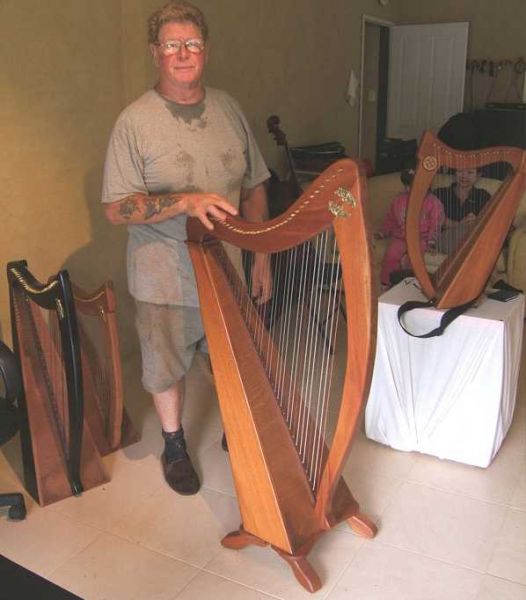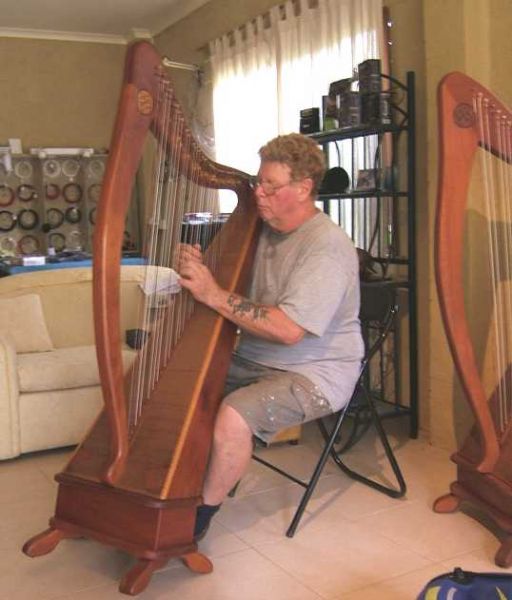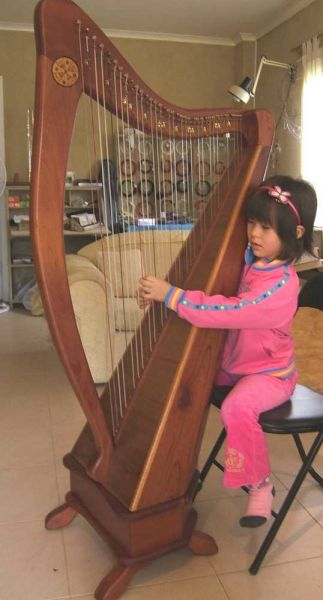
We arrived and Dennis emerged from his workshop. Although he was 2 weeks behind in his work, he kindly led us to his showroom, tuned up one of his large floor models and began to play while we sat spellbound by the beauty of the sound. One of the keys to successful building is knowing your instruments from the POV of the player. Dennis is a fine musician and has a CD out to prove it.
http://www.harpsales.com/track1CDclip.mp3

His harps are not covered in gaudy gold paint hiding who knows what. His inlayed and engraved motifs are honest and far more attractive, IMO.
I didn't ask about the finish. It appeared to be some type of low sheen polymerized oil finish that looks just right for these instruments.
The budget priced models have flat backs. The more expensive models have 'staved' backs that a smaller person would find easier to play because the back nestles more easily into your shoulder. Dennis uses mostly Australian red cedar and also silky oak salvaged from the floor of forests (my guess: probably from around Dorigo or further afield).
My daughter quickly got the idea from watching Dennis play, but declined my suggestion that she learn to play. Note the motif, top LH corner across the joint.

A few workshop photos are available here:
http://www.harpsales.com/Gworkshop.html
If I ever get to the point of having a web site, it will be modeled on Denny's. Music played on his harps is embedded in several pages. Navigating around the site is a pleasure.
http://www.harpsales.com